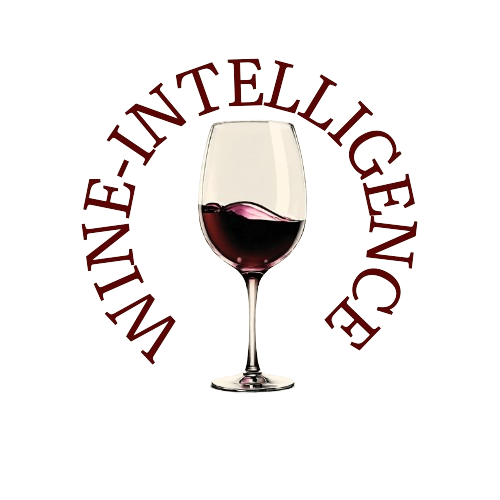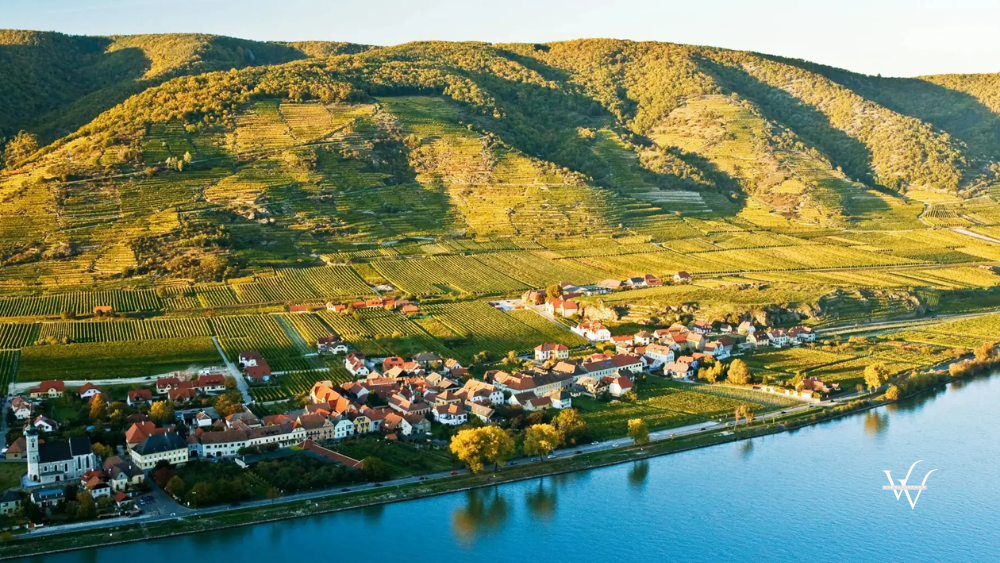Domäne Wachau is a well-known wine brand in Austria and internationally, has its own place on the worldwide wine map, bringing centuries-long history, experience and fascination to what means high-quality and unique wines.
My late-October visit in the region has strengthened the idea of Wachau's originality and charm: beautiful hills with vineyards, Smaragd's Riesling waiting to be harvested and, of course, wine tasting.
In this article I invite you to explore together Domäne Wachau winery, a place where wine-making was born and has been raised at the highest levels, where modern wine-growing is much interconnected with the past, resulting in some marvelous wines from one of the best vineyards...
Winery history
The first document mentioning the winery dates back to 11th century. In the 18th century, the winery became famous for its wines, due to significant involvement of catholic church, to whom the winery belonged. 1714 is the year of Domäne Wachau's official foundation. In that period the "Kellerschlössel" (Baroque Cellar Palace) was built, which cellars of roughly 2 km are used until now for wine-making and wine storage.
After the secularization, the Upper Austrian family Starhemberg has taken the ownership of winery, cellars and most of the vineyards. In early 20th century, one of family's member has sold the land to local winegrowers, which have formed in 1938, the cooperative, named Winzergenossenschaft Wachau. The cooperative has bought the Starhemberg winery, that is, its cellar, buildings, and vinification facilities.
After World War II, the cooperative has become a successful wine association with impressive results. The performance went into a shadow in 1980s, impacted by Austrian wine scandal, continued in 1990s due to mismanagement. But the situation have changed in mid-2000s with a re-organization and new management.
First changes have started with the creation of Vinea Wachau Nobilis Districtus (Vinea Wachau), the appellation protection association of the Wachau, created in 1983, of which Domäne Wachau is member since. What that means? The winery still uses the quality guidance for dry white wines (sometimes for rosé too) approved by Vinea Wachau, as follows (according to Österreich Wein Marketing GmbH - Austrian Wine Marketing Board):
- Steinfeder - The lightest style of wine from the grower’s association Vinea Wachau, with a stipulated maximum alcohol content of 11.5% by volume. The name itself refers to the Steinfeder grass (Stipa pennata), which grows near the vines in the Wachau’s terraced vineyards.
- Federspiel - Wines produced by members of the Vinea Wachau, featuring a must weight of at least 17° KMW and an alcohol content of between 11.5% and 12.5% by volume. The name Federspiel refers back to the times of falconry, when this noble form of hunting was often practized in the Wachau.
- Smaragd - The designation for the best wines from the Vinea Wachau, an alcohol content ranging upward from 12.5% by volume; the highest grade of ripeness couples here with natural concentration. Named for the emerald-green Idex lizards of the region, Smaragd.
*KMW (Klosterneuburg Must Weight Scale, in German: Klosterneuburger Mostwaage): The weight of the must measured as being 1 gram of sugar per 100 grams of grape must.
In 2004, Domäne Wachau has implemented a dual leadership, the winery director and the head winemaker, meaning "the management gets much trust and freedom from the board and can act independently; this refers to all decisions regarding personnel, marketing, portfolio, wine styles, pricing, organisation, strategy, etc. Only in case of substantial changes or major investments, the board of directors and the supervisory board is involved". The dual leadership has simplified the administrative work, decision-making processes and amplified the market-oriented approaches, developing a modern and efficient company.
Currently, the winery is managed by Roman Horvath MW (winery director) and Heinz Frischengruber (head winemaker).
Domäne Wachau nowadays
How the Domäne Wachau looks like today? And what is it representing now?
One of the leading wineries in Austria (a "flagship Austrian winery")
- A cooperative with 250 vintner families
- World's Best Vineyards in 2020 and 2023 (~30% of them on steeply terraced hillsides)
- Vineyards of 440 hectares (approximately one-third of the Wachau's total vineyard area of 1,350 ha), with Grüner Veltliner 70% of surface, following of Riesling 20%, other white wines (Neuburger, Pinot Blanc, Chardonnay, Sauvignon Blanc, Gelber Muskateller) 9% and 1% red wines (Blauer Zweigelt)
- Solid wine portfolio, mainly of Grüner Veltliner and Riesling, with basis on single vineyards' wines (top quality wines, CRU in France and Ried in Austria)
- Production capacity of 2.5-3 million bottles per year
- Exports ~50% to more than 50 countries (particularly to the Netherlands, Sweden, the United Kingdom, the United States, Belgium, and Denmark)
- Since 2018, the winery's wines have got the seal of "Sustainable Austria" provided by the Austrian Winegrowers Association
Wine Tasting
I have to admit that I was in difficulty to decide which wine I liked more, hence, I would propose two, which by coincidence probably come both from western Wachau (around Spitz location):
- Neuburger Spitzer Graben Federspiel (Falstaff 91 points): This was a big and positive surprise - a rare grape variety from steep terraced vineyards from the Spitzer Graben. Complex and aromatic wine, balanced minerality, fresh, with notes of stone fruit, apple and citrus.
- Grüner Veltliner Ried Axpoint Smaragd (Falstaff 94 points): Coming from the cool climate around Spitz, the wine is gently spicy, elegant and well-structured, with aromas of melon, green apple and lychee. Dense on the palate, full body, refreshing, high minerality and acidity, this wine has high potential for aging and storage.
Instead of conclusion
Domäne Wachau has proven, in more than 300 years of existence, resilience, ups and downs, but I would emphasize the time-tested focus on high-quality, pure and unique wines, from its fascinating terroir and landscape, along Danube River valley from Melk to Krems.
What is the future of Domäne Wachau? Definitely, it is bright and one can expect a similar high-quality and fantastic wines, despite continuing challenges due to the climate change, mainly for Grüner Veltliner. Probably some challenges from competition and regulations will increase on domestic (Austria) and international markets, but how the history shows, the company has shown enough flexibility to overcome it.

